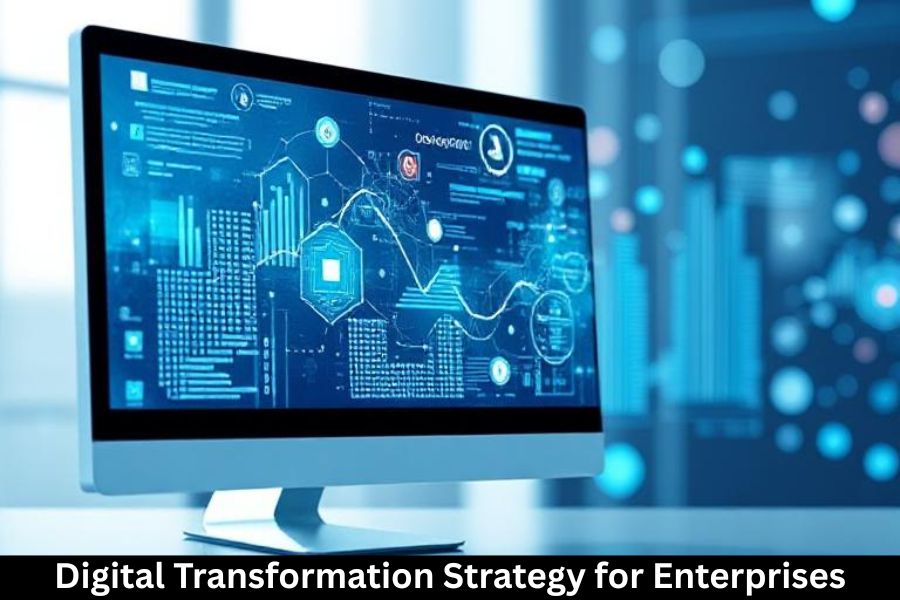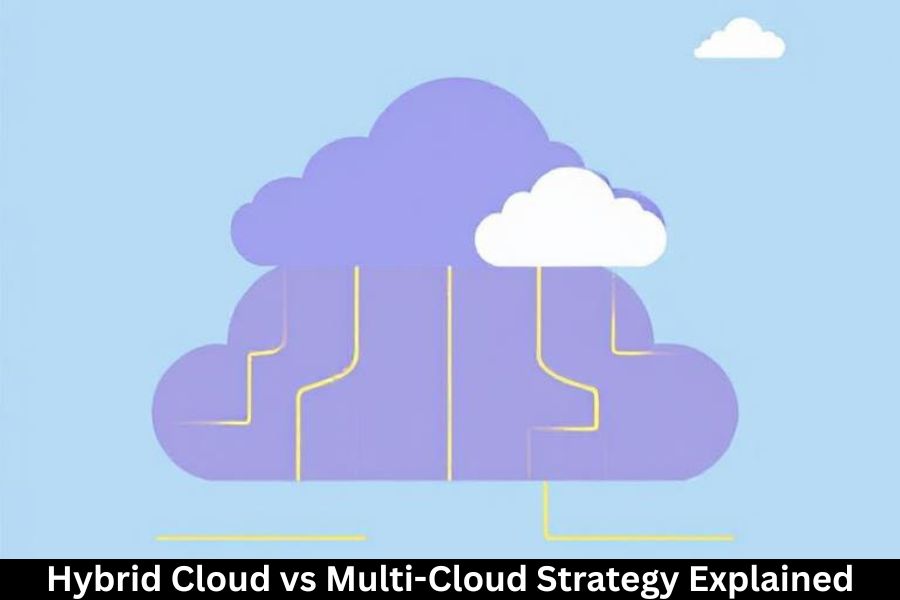In today’s digital-first economy, transformation isn’t optional—it’s essential for survival. Enterprises across industries are rethinking how they operate, serve customers, and create value. From artificial intelligence to automation, every innovation is reshaping the way organizations function.
But here’s the truth: digital transformation isn’t just about adopting new technology—it’s about building a sustainable strategy that aligns technology, people, and processes to drive growth and innovation.
Let’s explore how enterprises can design and implement a powerful digital transformation strategy that delivers measurable success.
1. What Is Digital Transformation?
Digital transformation (DX) refers to the integration of digital technologies into all areas of a business, resulting in fundamental changes to how it operates and delivers value to customers.
It goes beyond tools—it’s about a cultural shift toward agility, data-driven decisions, and customer-centricity.
2. Why Enterprises Need a Digital Transformation Strategy
Without a roadmap, digital initiatives risk becoming fragmented and costly. A solid strategy ensures:
- Alignment with long-term business goals
- Optimized resource allocation
- Clear success metrics
- Employee and stakeholder buy-in
Essentially, it’s the blueprint that turns innovation into competitive advantage.
3. The Key Pillars of a Digital Transformation Strategy
Every successful transformation strategy rests on a few critical pillars:
3.1. Leadership and Vision
Executives must drive transformation from the top. Leaders set the tone for innovation, allocate resources, and foster a risk-tolerant culture.
3.2. Technology Enablement
This includes adopting cloud computing, AI, IoT, automation, and data analytics to streamline operations and unlock new capabilities.
3.3. Process Optimization
Legacy processes often slow innovation. Redesign workflows to be agile, automated, and customer-focused.
3.4. Employee Empowerment
Train and upskill teams for digital readiness. People—not tools—are the backbone of transformation.
3.5. Customer-Centric Design
Customer experience (CX) must be at the heart of every digital initiative.
4. Understanding the Four Phases of Transformation
A structured approach ensures sustainability:
- Assess & Envision – Analyze your current digital maturity and define goals.
- Strategize & Plan – Identify key technologies, skills, and processes to modernize.
- Implement & Integrate – Deploy technologies and redesign operations.
- Measure & Optimize – Track KPIs, learn, and evolve continuously.
5. Identifying Core Business Objectives
Before choosing any technology, define the why. Common enterprise goals include:
- Improving operational efficiency
- Enhancing customer engagement
- Enabling data-driven decision-making
- Building innovation ecosystems
- Reducing costs through automation
A clear vision prevents “tech for tech’s sake” syndrome.
6. The Role of Data in Digital Transformation
Data is the fuel that powers digital transformation. Enterprises must:
- Consolidate data from siloed systems
- Adopt analytics and AI tools for insights
- Use predictive models to guide decisions
A robust data governance framework ensures accuracy, privacy, and compliance.
7. Leveraging Emerging Technologies
Enterprises can accelerate transformation through:
- Artificial Intelligence (AI) for automation and analytics
- Internet of Things (IoT) for connected operations
- Cloud Computing for scalability and flexibility
- Blockchain for transparency and security
- Robotic Process Automation (RPA) for repetitive task efficiency
Choosing the right mix depends on your industry and goals.
8. Building a Scalable IT Infrastructure
A successful strategy requires a flexible, secure, and scalable IT foundation.
- Embrace hybrid or multi-cloud environments.
- Prioritize cybersecurity and compliance.
- Implement APIs for seamless integration.
- Use DevOps and agile practices for faster deployment.
Your infrastructure should evolve as your strategy matures.
9. Fostering a Digital-First Culture
Technology alone can’t transform a company—people can.
Encourage a mindset of:
- Continuous learning
- Innovation and experimentation
- Collaboration across departments
- Openness to change
Enterprises that invest in culture see higher success rates in digital adoption.
10. The Importance of Change Management
Change can be uncomfortable. A robust change management framework helps minimize resistance and ensures smooth adoption.
Key steps include:
- Transparent communication
- Involvement of key stakeholders
- Training and support programs
- Continuous feedback mechanisms
11. Customer Experience as a Transformation Driver
In the digital age, customers expect speed, personalization, and consistency.
Enhancing CX through digital tools includes:
- AI chatbots for instant support
- Omni-channel engagement
- Personalized marketing using data insights
- Seamless self-service options
Enterprises that prioritize CX outperform competitors in loyalty and revenue.
12. Measuring Success – Key Performance Indicators (KPIs)
Transformation must be measurable. Common KPIs include:
- Digital adoption rates
- Customer satisfaction (NPS, CSAT)
- Operational cost reduction
- Time-to-market for new services
- Employee productivity and engagement
Set short-term and long-term metrics to track ROI effectively.
13. Overcoming Common Challenges
Digital transformation isn’t without roadblocks:
- Legacy systems slowing innovation
- Resistance to change within teams
- Skill shortages in new technologies
- Data privacy and compliance concerns
Address these through phased implementation, leadership support, and strategic partnerships.
14. Case Study: Enterprise Success in Action
Example: General Electric (GE)
GE adopted a company-wide digital transformation strategy by integrating IoT with industrial machines. This shift toward Industrial Internet helped GE collect real-time performance data, optimize maintenance schedules, and save millions annually.
Lesson: Aligning technology with business outcomes drives tangible results.
15. Steps to Develop Your Own Digital Transformation Strategy
- Assess your current state – Where are your digital gaps?
- Set a clear vision – What outcomes do you want to achieve?
- Engage leadership and teams – Secure buy-in from all levels.
- Select the right technologies – Focus on business value, not hype.
- Pilot programs – Start small, scale fast.
- Track performance – Use KPIs and data-driven feedback.
- Continuously improve – Digital transformation is never “done.”
16. Industry-Specific Transformation Trends
- Retail: AI-driven personalization and predictive analytics.
- Finance: Blockchain and digital banking.
- Healthcare: Telemedicine and data-driven diagnostics.
- Manufacturing: IoT and predictive maintenance.
- Education: E-learning platforms and AR/VR classrooms.
Each sector adapts digital transformation uniquely to meet evolving consumer needs.
17. The Future of Digital Transformation
The next phase of enterprise transformation will be driven by:
- AI-powered automation
- Metaverse workplaces
- Sustainability through digital innovation
- Decentralized data ecosystems
Enterprises that embrace innovation early will lead the digital economy of tomorrow.
Conclusion – A Continuous Journey, Not a One-Time Project
A successful digital transformation strategy is not a destination but an ongoing evolution.
It’s about aligning technology with purpose—empowering people, optimizing processes, and delighting customers. Enterprises that embrace this mindset are not just adapting to the future—they’re creating it.
Start small, scale strategically, and let data and innovation guide every step forward.
FAQs
Q1. What is the first step in creating a digital transformation strategy?
Begin with a digital maturity assessment to understand your current position and define clear business objectives.
Q2. Which technologies are most critical for enterprise transformation?
AI, cloud computing, IoT, and data analytics are the most impactful technologies driving enterprise transformation today.
Q3. How long does a digital transformation take?
It varies by organization, but most enterprises experience significant change within 18–36 months, depending on scale and readiness.
Q4. How can enterprises measure digital transformation success?
By tracking KPIs such as ROI, customer satisfaction, process efficiency, and employee engagement.
Q5. Why do digital transformations fail?
Most failures occur due to unclear vision, poor leadership commitment, cultural resistance, or lack of measurable goals.



